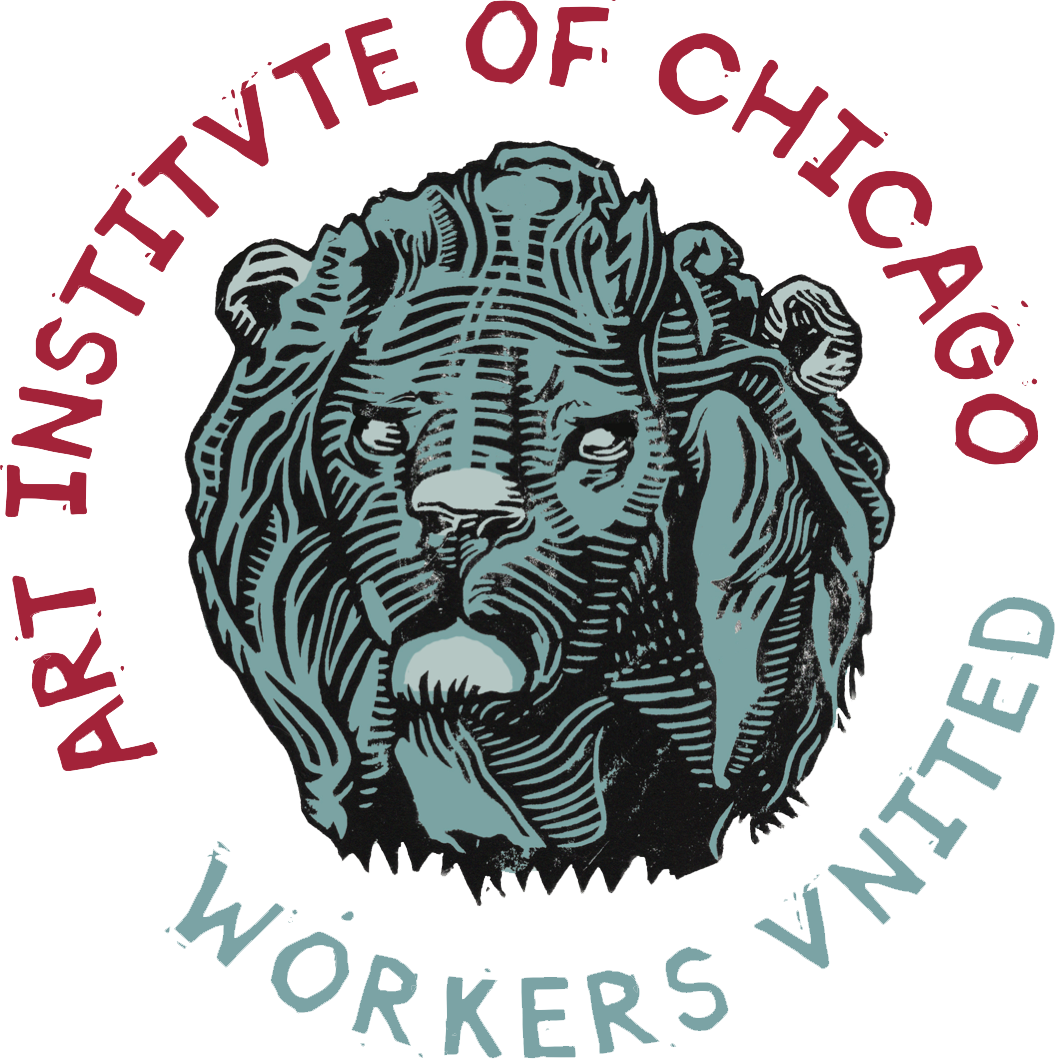Museum Peer-to-Peer Q&A
We had a big week! SAIC staff announced they are joining our campaign. While we will form separate bargaining units, we are happy to be working together in solidarity towards a strong voice for workers!
We want to thank everyone who has gotten in touch, whether it was via email (info@aicwu.org), phone, or pausing to have a conversation with one of us outside the museum! Thanks as well to those who attended our info sessions this week; it was wonderful to see so many of you there.
Need more info? We’ve got you! Here are some more questions submitted by your peers:
Q: I’m in support of the union and would like to sign a card, but I’m worried that my manager will find out and use it against me. How can I be sure that my card is secret?
Cards are entirely confidential; no one in management will know you have signed one unless you tell them. When employers have attempted to access cards in the past, case law has upheld their confidentiality. Even a subpoena cannot give an employer access to cards.
Q: I’m not sure if I’m eligible to join the union. Can I still sign a card?
Yes. AIC management does not have final say over who is and is not eligible for the union; that will be determined by the National Labor Relations Board (NLRB). If your position is in a “gray area” and you are unsure if you qualify for the union, you can still sign a card. If the NLRB determines you are ineligible, your card will simply not be counted. If your job description has recently changed to include the word “supervises” or “manages,” don’t panic—you could still be eligible. Contact us if you have more questions about eligibility and we will help parse your individual situation.
Q : Is the primary goal of a union to increase wages?
Right now the primary goal of our union is to give staff a seat at the bargaining table with the Art Institute administration. We want the right to negotiate our working conditions, benefits, professional development, and, yes, our wages. Because unionized workers have strong negotiating power, they tend to earn more than non-unionized workers. According to the Bureau of Labor Statistics, in 2020 unionized workers earned an average of 19.4% more than non-unionized workers. That difference increased to 25.98% and 39.18% for b/Black and Latinx workers, respectively.
Q : Of course it would be nice to earn more, but given the events of the past year, it makes sense that the museum can’t afford it, right?
The Art Institute chose to layoff 51 workers even though they reportedly held $336.6 million in unrestricted net assets they could have used to avert the layoffs (The Art Institute of Chicago Independent Auditors’ Report, June 30, 2019). The Art Institute could afford to make more of a financial investment in staff if they chose to; management has simply indicated that is not a priority to them. Our union wants to change that and ensure that leadership invests in our talent and our careers.
Q: $22 per pay period is a significant expense. How will I afford to pay union dues?
All eligible employees will begin to pay union dues only after our first contract with management is ratified. Before that point, we will all have the opportunity to vote on the contract to make sure that it is worthy of our dues. Full-time employees will pay $22 per pay period, but part-time employees will pay less. Though we cannot project precisely what will be in our contract, many other unions have negotiated things like salary floors and mandated annual cost-of-living increases. Read about the path to our first contract here.
Lastly, we know that an opportunity for change like this one can be intimidating! Many of us are so used to the status quo that it’s hard to envision an alternative. Our union is daring to imagine what it could be like to work at the Art Institute of Chicago if staff had a real voice. Join with us to make that notion a reality.
Have more questions? Send us an email. Ready to stand with us? Sign a card here.
Sincerely,
Your AICWU OC
